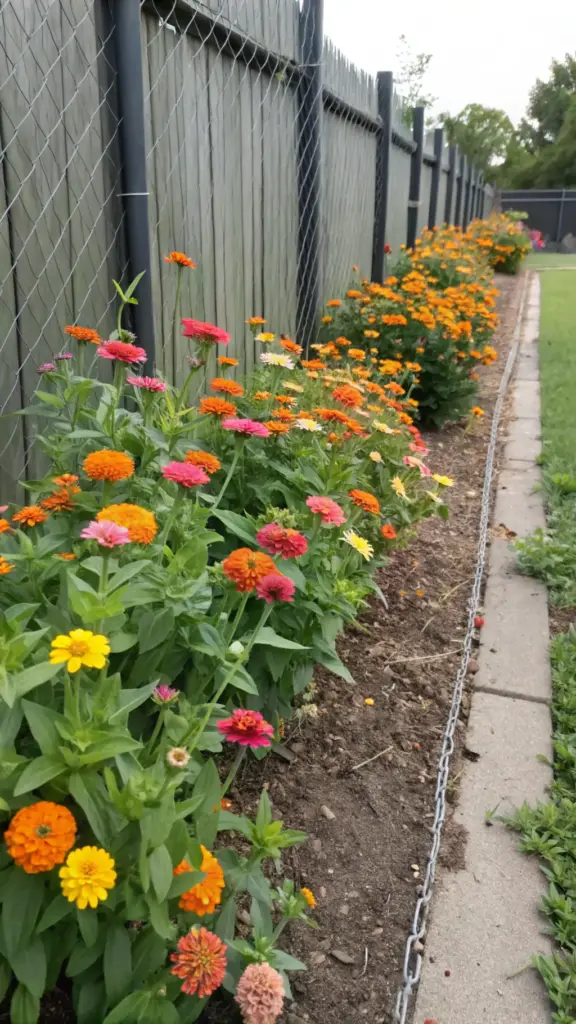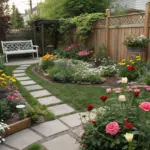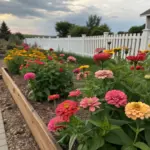8. Creating a Drought-Resistant Zinnia Border

Let me tell you about my journey creating a water-wise zinnia garden that’s both beautiful and practical. After watching my water bill skyrocket one summer, I knew I had to make some changes to my gardening approach. What I discovered completely changed how I think about sustainable gardening!
Selecting the Right Zinnia Varieties
When it comes to drought-resistant zinnias, not all varieties are created equal! Oklahoma Series and Profusion Series zinnias have become my absolute favorites for hot, dry conditions. These hardy varieties have proven themselves time and time again in my garden, producing gorgeous blooms even during those brutal summer heat waves.
I learned the hard way that the key to success is choosing compact varieties with smaller flowers. These plants typically need less water than their larger-flowered cousins. The Desert Series zinnias are another excellent choice – they were literally bred for arid conditions!
Companion Planting for Success
Creating a truly drought-resistant border isn’t just about the zinnias. I’ve found that mixing in native plants creates a more resilient garden ecosystem. Some of my go-to companions include:
- Lantana: These tough little plants complement zinnias perfectly
- Salvia: The vertical spikes add wonderful contrast
- Verbena: Creates a beautiful ground cover that helps retain soil moisture
- Russian Sage: Adds height and structure to the border
Smart Irrigation Strategies
Here’s something I wish I’d known earlier: proper irrigation isn’t about watering more, it’s about watering smarter. I installed a drip irrigation system that delivers water directly to the plant roots, and honestly, it’s been a game-changer. My plants are thriving with about 40% less water than before!
Mulching Magic
Let’s talk about my favorite garden hack – mulching! I use a 3-inch layer of organic mulch around my zinnias, and it’s like giving your garden a cozy blanket that keeps moisture in and weeds out. The trick is to keep the mulch a few inches away from the plant stems to prevent rot.
I prefer using:
- Pine straw
- Shredded bark
- Cocoa hulls (they smell amazing!)
- Composted leaves
The results have been incredible – my zinnias now need watering just once or twice a week, even during peak summer heat. Plus, the mulch breaks down over time, improving my soil structure naturally.
Ready to discover another exciting way to enhance your zinnia garden? Our next section explores creating a stunning Photography Corner that’ll make your garden Instagram-worthy! Click the next button below to learn how to design picture-perfect planting combinations and create magical photo opportunities in your garden. Trust me, you won’t want to miss these professional photography tips that’ll make your zinnia border look absolutely stunning in every shot!










GIPHY App Key not set. Please check settings